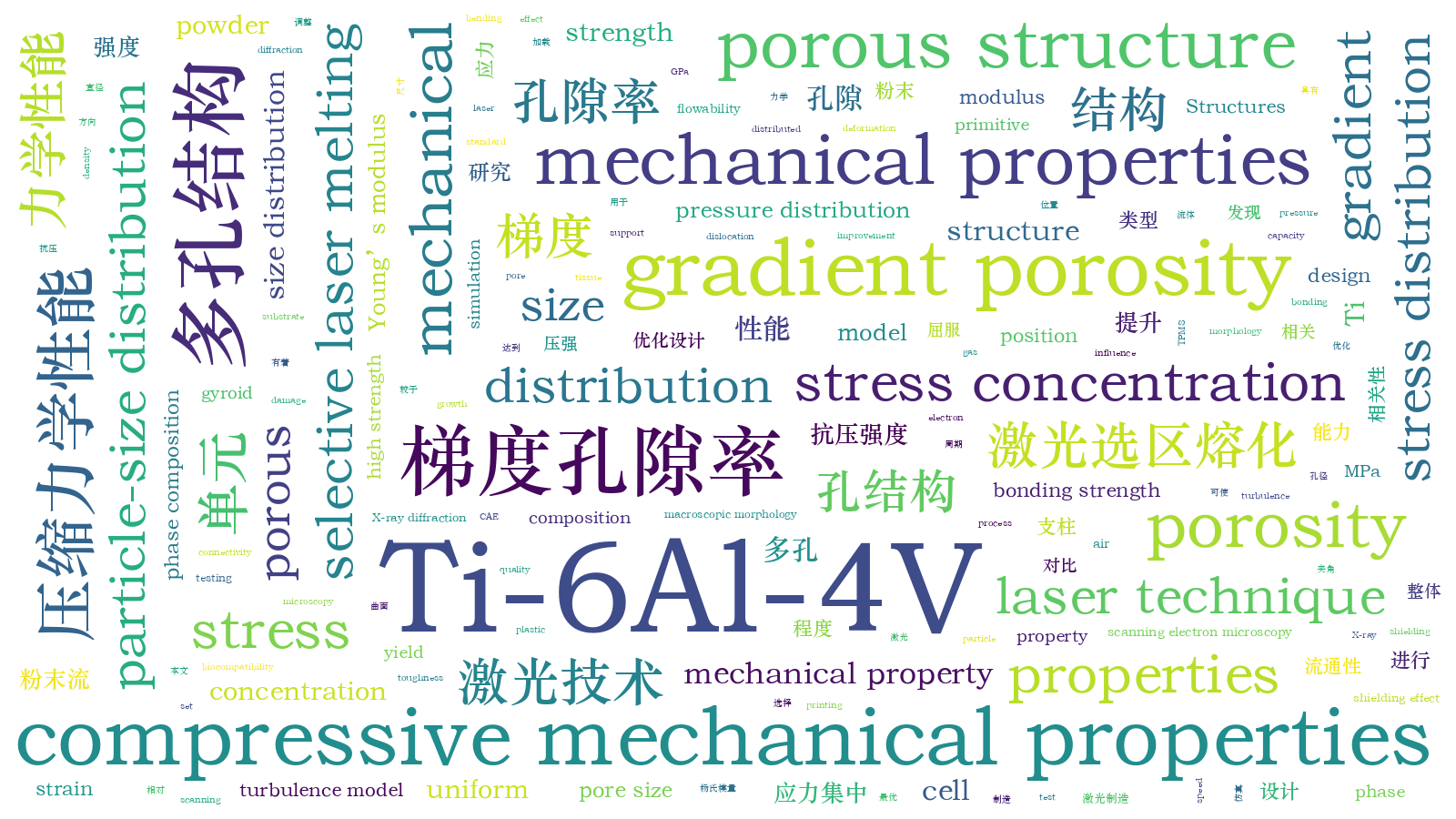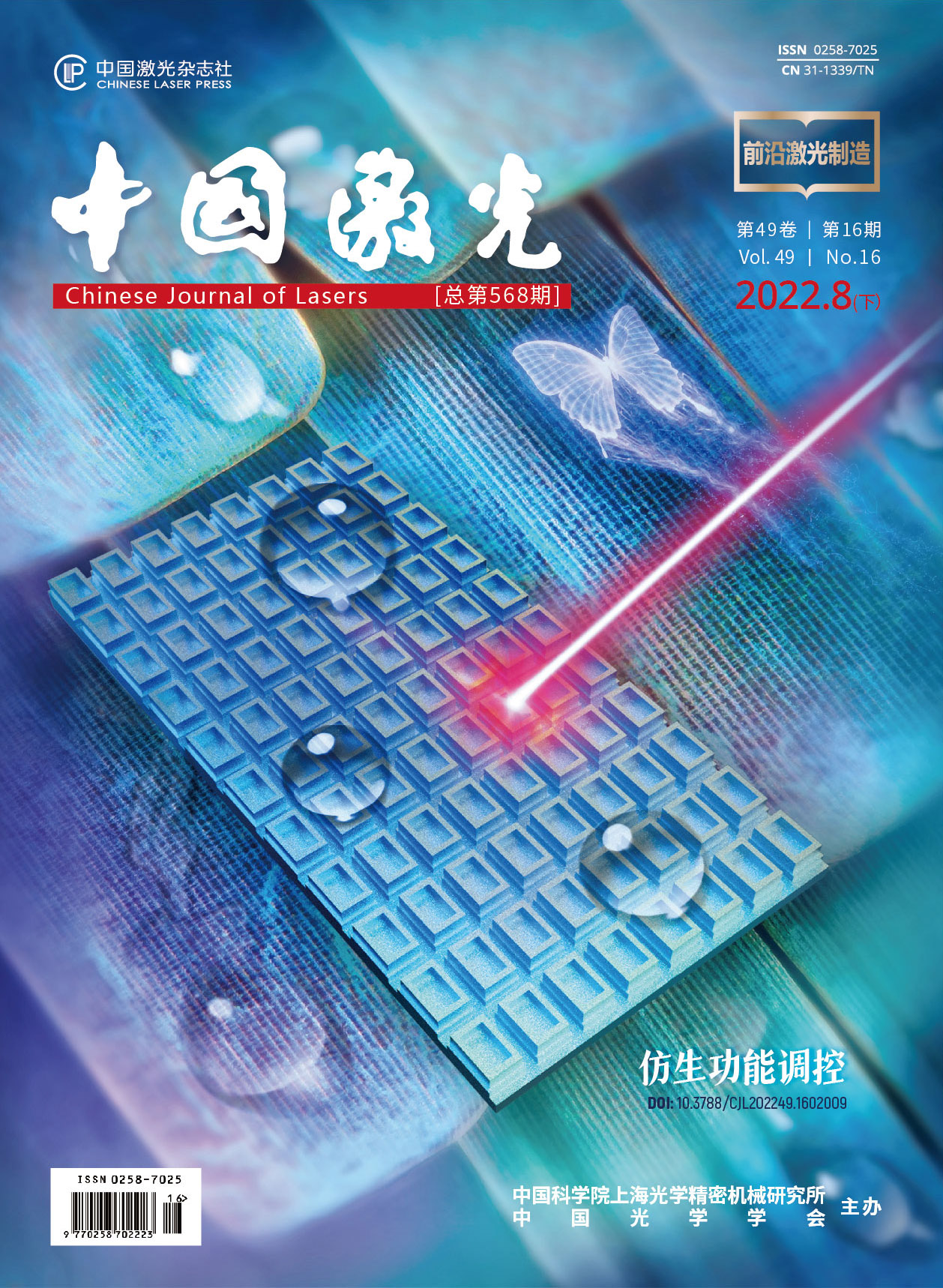Ti-6Al-4V梯度多孔结构的流通性与力学性能研究  下载: 624次
下载: 624次
To prevent damage caused by stress-shielding effect, the Young’s modulus of a designed implant must be controlled at 3-30 GPa. Therefore, a porous structural design is necessary to adjust the Young’s modulus (110 GPa) of selective laser melted Ti-6Al-4V and to satisfy the mechanical properties of implants. The porous structure is necessary for appropriate Young’s modulus, extremely high strength and toughness, tissue growth, and biocompatibility. To obtain optimal mechanical properties, controlling the gradient porosity and gradient cell distribution is important. Gradient porosity was introduced in the model design. The stress concentration among the cells with different porosity gradients, powder flowability, and compressive mechanical properties were determined using the variant porosity gradients. Low-porosity units were used to optimize the porosity and mechanical properties, which were arranged in a high shear-strength zone located at 45°-53° and perpendicular to the Y-Z plane.
The macroscopic morphology and particle-size distribution of powders were assessed using scanning electron microscopy and analyzed using ImageJ, as shown in Figs. 1(a) and (b). The chemical compositions of the powders provided by the supplier are listed in Table 1. The substrate plate was made of Ti-6Al-4V to enhance the bonding strength. Two types of porous cells, i.e., primitive (P) and gyroid (G) cells, with 40%, 45%, and 50% porosity, were designed and built. The compressive samples was set to 6×6×6 cells according to according to the ISO 13314—2011 standard. The gradient porosity was distributed at a position perpendicular to the Y-Z plane and at 45° from the X-Y plane to improve the mechanical properties. The phase composition of the powders and printed samples were detected using X-ray diffraction. The stress concentration was calculated using the CAE-STANDARD solver. The optimal gradient porosities were determined based on the position of the stress concentration and strain. The powder-flowability analysis of each porous cell was simulated using Fluent. We assumed that the Ti-6Al-4V powder was in a discrete phase that would be bounced back from the wall, and air was solved using the STANDARD k-ε turbulence model. Subsequently, the gas-solid mixed flow model was obtained.
P scaffolds with a 5% gradient porosity are best for subsequent model design and compressive testing. Simultaneously, G scaffolds with uniform porosity provide the best stress and strain distribution (Figs. 8-10). Because of the strut distribution and extremely strong connectivity of the porous structure, the G cell exhibits a uniform air-pressure distribution and stable powder-discharge speed when the porosity reaches 50% and 45%, respectively (Figs. 11 and 12). Each mechanical property of the P scaffolds is considerably superior than the G scaffolds (Fig. 20). According to the simulation results (Figs. 8-10), few stress concentrations occur in the P scaffolds, and the plastic-strain distribution caused by the deformation is uniform, which corresponds to better mechanical properties of the P scaffolds during the actual compression process because of the influence of the cell-strut type, degree of bending of the minimum strut size [Fig. 14(b)], and effective strut size (Fig. 8). We can observe that the yield strength is completely consistent with the minimum strut size [Figs. 14(b) and 20(b)], indicating that the minimum strut size of the support shaft considerably affects the yield strength.
Static simulation of the porous structure with a 5% gradient porosity shows that a even stress distribution occurs in the P and G scaffolds, which can well satisfy the implant requirements of internal printing quality and mechanical properties. Simultaneously, the larger pore size of the P cell makes the powder-discharge capacity stronger. From the analysis of the mechanical properties of each gradient porous structure, we find that a larger effective strut size of the P scaffolds leads to a uniform stress distribution, which greatly promotes the mechanical properties. From the compression test of the P and G cells, because of the reasonable stress concentration and increased density of the cell at the 45° position, the 45%-50% gradient porosity structure demonstrates a substantial improvement in the mechanical properties compared with the 50% uniform porosity structure. When the porosity gradient continues to increase, a serious stress concentration owing to unit dislocation causes the overall mechanical property to decrease.
刘畅, 陈昌荣, 王乾廷, 练国富, 黄旭, 冯美艳, 戴继成. Ti-6Al-4V梯度多孔结构的流通性与力学性能研究[J]. 中国激光, 2022, 49(16): 1602010. Chang Liu, Changrong Chen, Qianting Wang, Guofu Lian, Xu Huang, Meiyan Feng, Jicheng Dai. Flowability and Mechanical Properties of Gradient Ti-6Al-4V Porous Structures[J]. Chinese Journal of Lasers, 2022, 49(16): 1602010.







